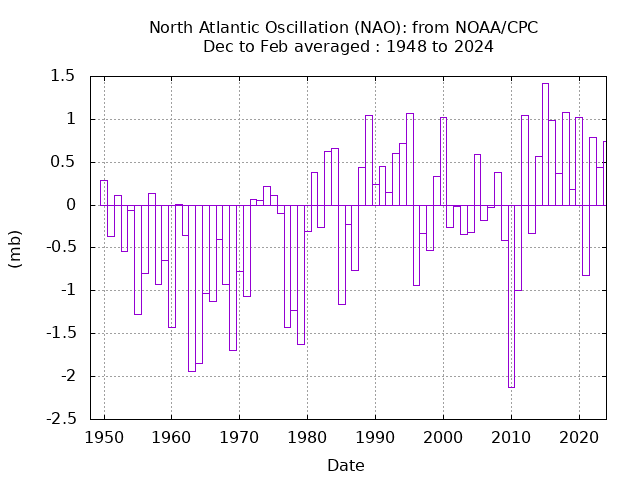
GaWx
Members-
Posts
17,501 -
Joined
Content Type
Profiles
Blogs
Forums
American Weather
Media Demo
Store
Gallery
Everything posted by GaWx
-
The 12Z Icon is much quicker than its prior runs and is now much closer to the timing of the consensus. Although much further E early, this much quicker movement allows it to be captured by the cutoff H5 low and it then moves N to near Panama City at 984 mb late Thu night followed by a NNW move through AL.
-
It is not finished, but the 12Z Icon is much faster and well E of its prior runs with it missing the Yucatan to the E for the first time. It look like it is going to be similar to the 0Z Euro.
-
6Z Euro-AI shifted ~50 miles NW of its 0Z with it coming in to the middle of the Big Bend vs the far rt portion of it on the 0Z
-
6Z EPS mean shifted slightly W of its 0Z run mean (now a little W of AL/GA border vs about on that border)
-
0Z EPS: follows the faster and further E 0Z Euro but it is like the Euro still NW of the GFS suite with tracks centered on Apalachicola that then go N near the GA/AL line before curling back NNW. It is similar to the 0Z GEPS.
-
0Z Euro: east trend in this model too; similar strength to UKMET/CMC (989) with landfall Apalachicola Thu night (much closer to GFS’ Thu evening and UK’s Fri afternoon than Icon’s Sun morning). Gives 3-7” of rainfall to most of NW FL, GA, AL, TN as it moves N through W GA and TN
-
0Z GEFS is still another pretty ominous run for Pensacola to Tampa and inland NE from there. Fortunately most members are much weaker than the operational but still this isn’t a good sign.
-
Even though the Icon and GFS have similar landfall locations/strengths, the GFS landfall is a whopping 60 hours earlier (Thu evening) vs Icon (Sun morning).
-
0Z UKMET: significantly stronger at landfall (993 vs 1000 on 12Z run) and 150 miles east of 12Z with a landfall late afternoon Friday in the FL Big Bend moving NNE; thankfully not nearly as strong as Icon/GFS but UK is notorious for being conservatively weak this far out, especially with winds but also with SLP and the trend is worrying: NEW TROPICAL CYCLONE FORECAST TO DEVELOP AFTER 84 HOURS FORECAST POSITION AT T+ 84 : 18.6N 85.7W LEAD CENTRAL MAXIMUM WIND VERIFYING TIME TIME POSITION PRESSURE (MB) SPEED (KNOTS) -------------- ---- -------- ------------- ------------- 1200UTC 25.09.2024 84 18.6N 85.7W 1003 34 0000UTC 26.09.2024 96 21.3N 85.1W 1001 34 1200UTC 26.09.2024 108 22.5N 85.8W 998 42 0000UTC 27.09.2024 120 25.0N 84.6W 995 40 1200UTC 27.09.2024 132 27.2N 84.3W 992 42 0000UTC 28.09.2024 144 31.1N 83.0W 995 41 1200UTC 28.09.2024 156 36.3N 82.7W 1000 23 0000UTC 29.09.2024 168 39.6N 82.7W 1005 27
-
If this storm were to actually take a similar path with that strength moving at that speed, that would likely be very damaging well inland (including in my area and well beyond). Hope nothing like this happens. I’d much prefer the slop.
-
18Z: GEFS: centered on FL Big Bend EPS: centered on Pensacola
-
Bad model. JMA better..it has 1003 moving little in Bay of Campeche at 192!
-
These operationals were not predicting anywhere near 930. The lowest yest was 963 on 6Z GFS. But anyway, good for Gulf coast to not have 930. Being not far from the coast, I can empathize. Slop is good. And don’t be fooled by strength. Flooding rains can happen with a TS or even unnamed like was the case in NC recently. And even a cat 1 H can cause sig damage near center.
-
12Z Euro: 991 Pensacola Fri night 12Z UKMET: 1000 FL panhandle Fri night 12Z Icon: 999 E LA Fri night 12Z GFS: 998 Panama City Thu night 12Z CMC: 993 Mobile late Thu afternoon
-
0Z: Euro: E of 12Z, which had hit Mobile 9/29 at 989; 0Z hits Apalachicola 9/29 at 984 mb GFS: just SE of Panama City late 9/27 at 979 CMC: E LA 9/27 981 ICON: C Gulf moving N 965 9/28 UK: 200 miles SSE of LA/TX border 1000 mb moving NNW late 9/27
-
12Z UKMET: TCG is a little earlier than the prior two runs as it is Wednesday evening in NW Caribbean; it moves slowly N and then NW into south-central Gulf Fri morning (end of run) with it then at 997 mb and strengthening: NEW TROPICAL CYCLONE FORECAST TO DEVELOP AFTER 132 HOURS FORECAST POSITION AT T+132 : 19.7N 86.5W LEAD CENTRAL MAXIMUM WIND VERIFYING TIME TIME POSITION PRESSURE (MB) SPEED (KNOTS) -------------- ---- -------- ------------- ------------- 0000UTC 26.09.2024 132 19.7N 86.5W 1002 32 1200UTC 26.09.2024 144 21.1N 86.5W 1001 43 0000UTC 27.09.2024 156 21.7N 88.2W 1000 35 1200UTC 27.09.2024 168 23.4N 89.3W 997 40
-
Accuweather is looking at all Sept NW Caribbean storms to make this map. If a climo map is going to be used, I’d prefer to use the NHC image below, which is just climo for storms originating Sept 21-30, when NW Caribbean storms tend to recurve more sharply and threaten FL peninsula more often than is the case for Sept as a whole. Also, TX is hit even less than the 14% shown with only one landfall:
-
12Z ICON: major change in track vs prior runs! Instead of going into the W Gulf, it never goes W of 89W and landfalls (at ~997 mb) at Panama City, FL, at hour 159 on Thu night.
-
For comparison, this is the 6Z GFS IR simulation as of 9AM EDT:
-
Wow, I got an initial response within 10 minutes! Impressive! “Hi The data used for the NAO on this page is from the cpc file tele_index.nh https://ftp.cpc.ncep.noaa.gov/wd52dg/data/indices/tele_index.nh and not the link you list. It appears the 2 time series differ somewhat. I am not sure what the difference is in this case. The climo could be different (most likely) or definition could be slightly different. I'll try to look into it. But we don't create either of the 2. I hope this helps. Cathy Smith” —————— The climo being different would make sense because they all missed the tabular based values about the same to the negative side.
-
I just sent NOAA an email at the address provided at the graphing site about this graph vs tabular NAO value discrepancy.
-
Chris, the winter NAO bar graph that you posted is off. I reposted it below. Did you produce this or did you copy it from somewhere? Every year on the graph is -0.25 to -0.5 more negative than the actual CPC monthly tabular values, which are here: https://www.cpc.ncep.noaa.gov/products/precip/CWlink/pna/norm.nao.monthly.b5001.current.ascii.table Example: your graph shows DJF 2009-10 at -2.1. But the table’s DJF averaged -1.7. So, the graph is 0.4 too negative. Another example: your graph shows 2014-5 to be ~+1.41. But the table calculates to +1.66. So, the graph is ~0.25 too negative. Another: your graph shows 1962-3 to be ~-1.95. But the table’s value is -1.47. So, the graph is ~0.48 too negative. Every winter is similar. I couldn’t even find one exception. Why is there this -0.25 to -0.5 discrepancy on the graph vs the table?
-
Change from run to run out that far is nothing unusual. The dartboard is getting closer but it is still pretty far away.
-
0Z EPS has an increase in members in the W GOM although a good number go earlier into the NE Gulf. Two camps.




